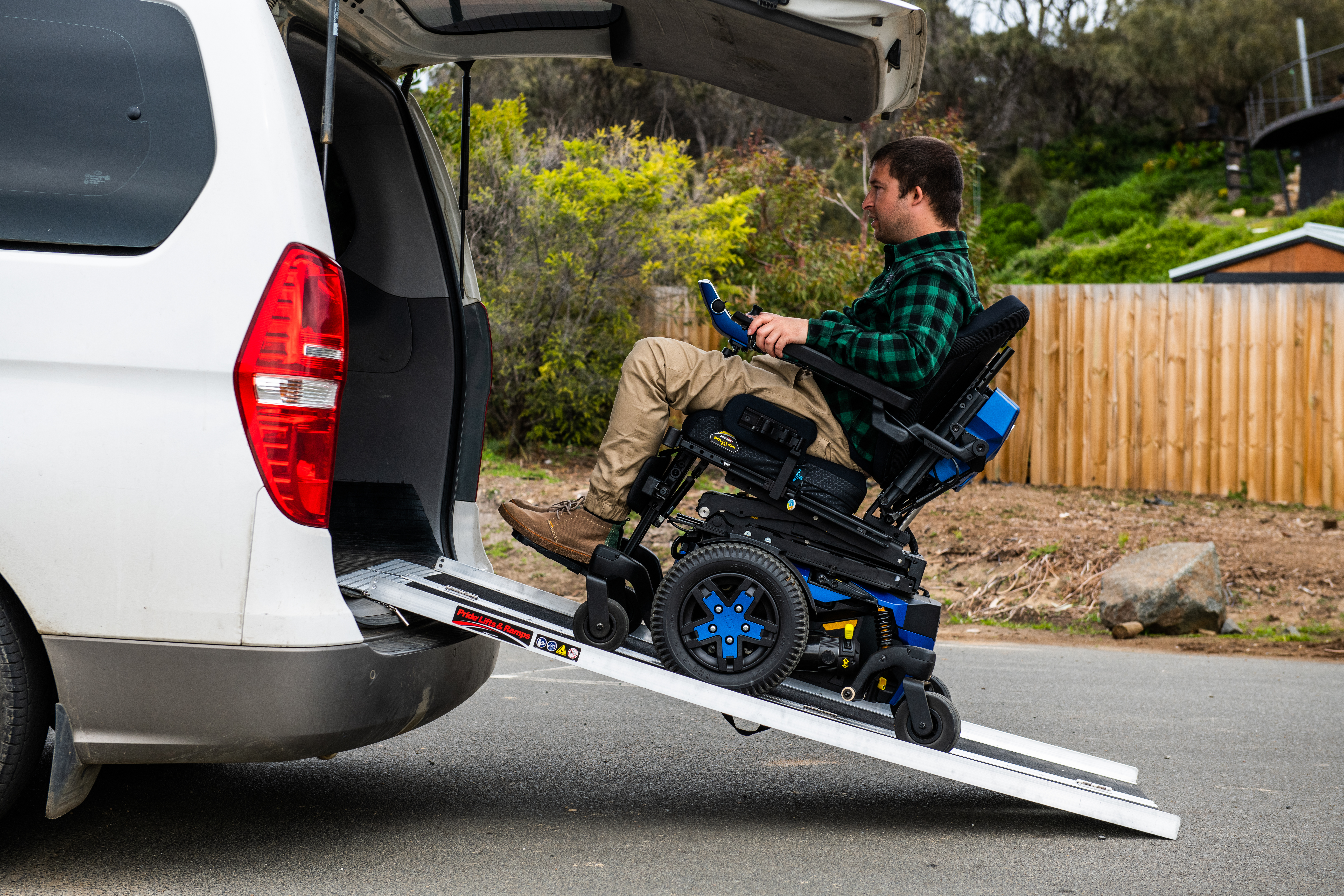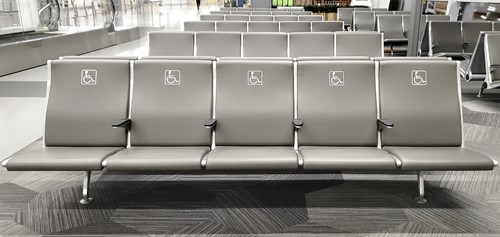
How to Travel with a Powerchair
01 March, 2022
Written by Allied Medical
Now that the world is beginning to open up again, we are not just limited to exploring our own back yard. Here are some things to consider when travelling in a powerchair.
We, along with the manufacturers of many powerchairs sold globally, always recommend that it is safest for anyone using a mobility device to transfer to a vehicle seat and use the seatbelt system or child safety seat that meets the New Zealand standards.
Land Transport
Powerchairs that have been designed and tested for use as a seat in motor vehicles are the best option. These chairs comply with ANSI/RESNA WC19 which is a voluntary standard developed by safety and rehabilitation experts. Information on this testing is included in manuals that come with each product and stickers are also visible on the powerchair itself if it has been tested to this standard. The powerchair will also have four crash tested securement points, where tie-down straps and hooks can easily be attached. These points are clearly marked with a hook symbol.
It is important that the Wheelchair Tiedown and Occupant Restraint Systems (WTORS) used within the vehicle, is used to secure the wheelchair and provide the occupant with a properly fitting three point lap and shoulder belt. Postural support belts that have been attached to the powerchair are not strong enough to withstand crash forces and are not usually positioned correctly to protect the person safely in an accident. This must also be crash tested and labelled that it complies with the ANSI/RESNA WC18. This system used four tie down straps or hooks that attach to the powerchair at the securement points marked. The straps need to be tightened to remove any slack.
There are other methods of powerchair securement that can be used, such as a docking system. These are attached to both the mobility device and the vehicle. More information on these should be sought from the product supplier and the wheelchair/powerchair supplier as different systems have been tested with different products.

Air Travel
All airlines have their own specific regulations they adhere to and we recommend that you contact them directly for their detailed guidelines.
It is important to supply your chosen airline with as much information as possible when you make your flight booking. Download our Powerchair Specifications for Flights guide here.
You may need to supply them with some or all of the following information:
- The type of mobility aid you are travelling with (electric or non-electric)
- What type of batteries are used (gel cell (dry) or wet (spill-able)
- Whether the mobility aid is collapsible
- The dimensions (height, width and length) in adjusted or disassembled state and its total weight
As a general rule, all powerchairs must be stowed as check-in luggage so it is important to minimise the possibility of damage during transit. We suggest you remove the seat cushions and any other parts that could easily become separated from the chair. It is also a good idea to travel with some basic maintenance tools for your powerchair.
Attaching a sign to the back of your powerchair using zip ties is also a great idea. An example of what to include on the sign is your telephone number, as well as any basic instructions for the cargo team to follow. Also include a note to say ''If you have any questions, please come onto the flight and ask me, do not force chair''.
Asking the gate agent if you can speak to the ramp lead or ramp agent is another way to explain how to operate your powerchair and avoid any unnecessary damage in transit. The person in charge of the cargo team can then instruct their team on how to load the powerchair correctly. Also explain how important your powerchair is to you so they have an understanding of how any damage would affect your day to day life.
Top Tips For Air Travel
- Fly direct where possible - You do not want the airline to continuously touch your powerchair, loading and unloading it off the aeroplane. The more the airline touches your powerchair, the higher the chance that something will go wrong. It may cost more, but will potentially save you the hassle and repair fee if anything gets damaged.
- Book a seat at the front of the plane and if this is not possible, ask the staff at your departure gate if swapping seats is possible. This will make things easier for you and the crew who will be helping you to your seat in an aisle chair.
- Communication is key - You could potentially be dealing with staff who haven't dealt with someone travelling with a powerchair before. Make sure everyone from your travel agent to the airline is aware of your needs so they can provide you with the best travel experience possible.
Click here to view our comprehensive range of powerchairs and here for more FAQ's on Powerchairs.
